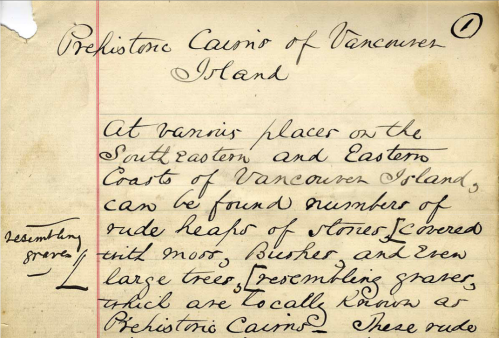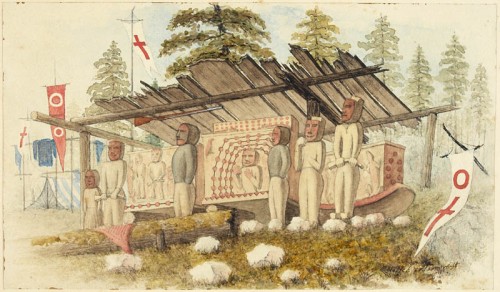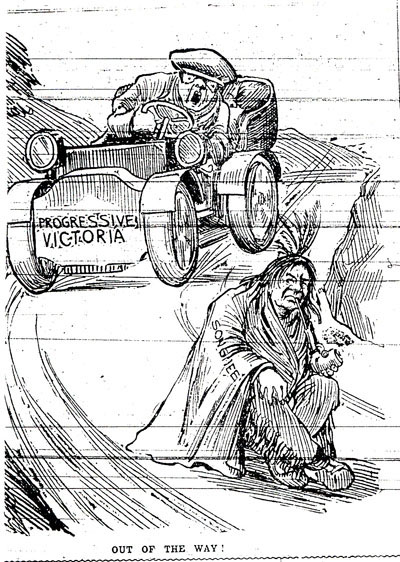
Frank Sylvester Burial Cairns Manuscript, Page One. Source: UVic Special Collections: http://goo.gl/mSxBGe
There’s an interesting manuscript digitized in the University of Victoria’s special collections library, entitled “Prehistoric Cairns of Vancouver Island.” The accession notes read:
“Handwritten manuscript, on ruled paper with red-lined margin. Pages hand-numbered 1-20. Signed and dated: Frank Sylvester, Victoria, B.C., June 10, 1901. Appears to be notes for a talk that Frank Sylvester gave, concerning burial cairns on Vancouver Island, his method of excavation of the cairns, and his theories as to the meaning of the cairns and the ancestry of the people buried there.”
It’s a curious document, a mixture of interesting observation, shameless plunder and racial theorizing. It’s also one of the more complete descriptions I’ve seen of the burial cairn excavation activities of the Victoria Natural History Society. I don’t recall seeing it cited in the literature, so it’s possible others haven’t come across it either. In the interests of broad circulation and easy reading, I’ve transcribed it (PDF), and I also put a version on google docs if anyone cares to improve that transcription.

![The giant of Happy Valley Esquivalt(?) [sic]. Sent to Professor Flower at Nat Hist Mus and returned to the owner Left McCallum. Source: British Museum.](https://qmackie.com/wp-content/uploads/2014/10/happy-valley-face.jpg?w=500&h=796)








